27+ Sample Perioperative Checklist Templates
-
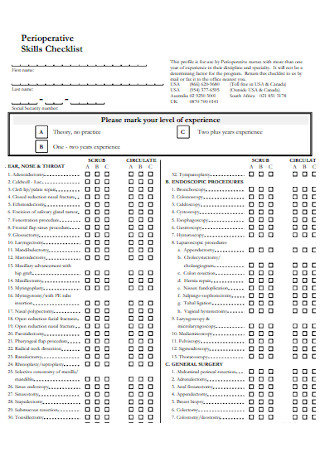
Perioperative Skills Checklist
download now -
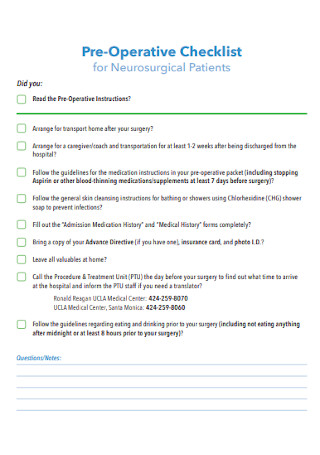
Pre-Operative Checklist for Neurosurgical Patients
download now -
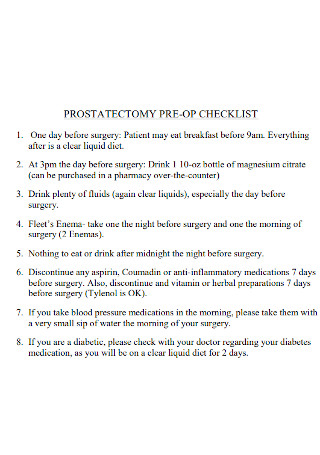
Prostatectomy Pre-operative Checklist
download now -
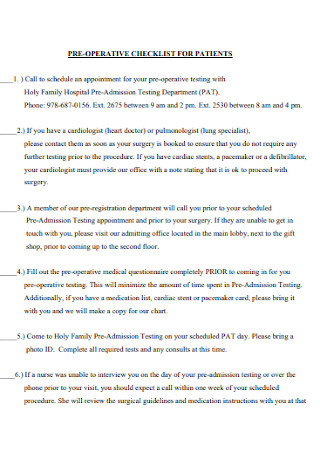
Pre-operative Checklist for Patient
download now -
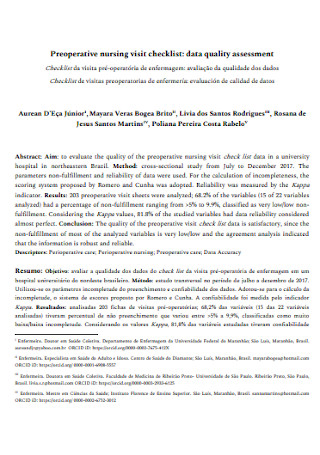
Preoperative Nursing visit Checklist
download now -
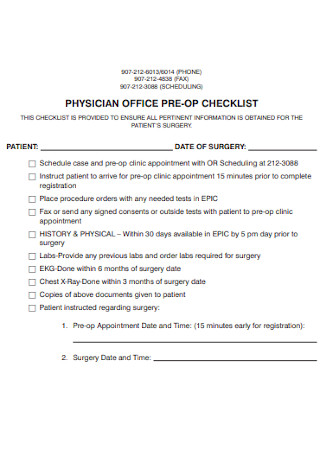
Physician Office Pre-operative Checklist
download now -
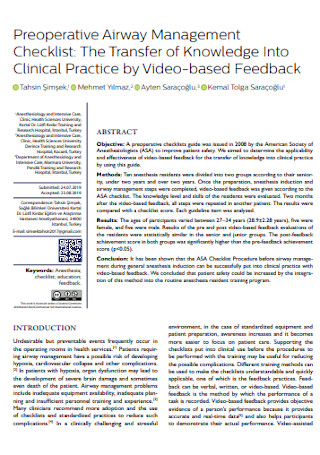
Preoperative Airway Management Checklist
download now -

Sample Pre-operative Checklist Template
download now -
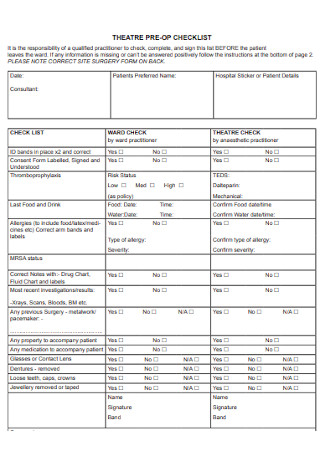
Theart Pre-opearative Checklist
download now -

Basic Pre-operative Checklist Template
download now -
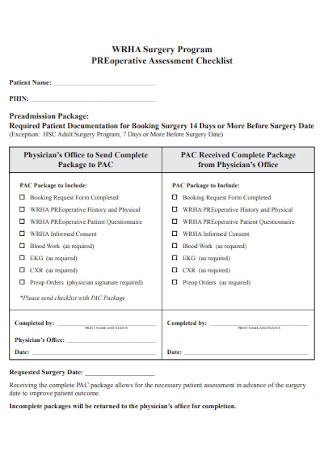
Pre-operative Assessment Checklist
download now -
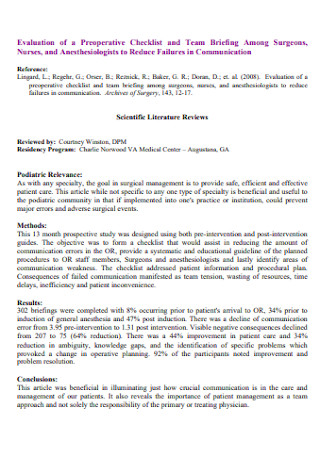
Evaluation of a Preoperative Checklist
download now -

Pre-operative Teaching Checklist Template
download now -

Simple Pre-operative Checklist
download now -

Preoperative Checklist Format
download now -
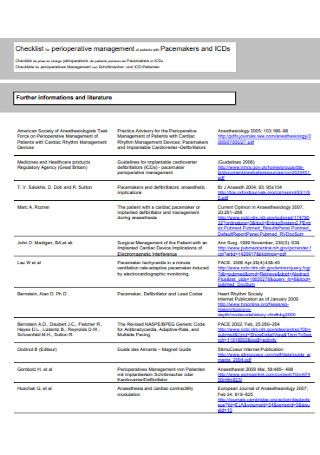
Perioperative Management Checklist Template
download now -
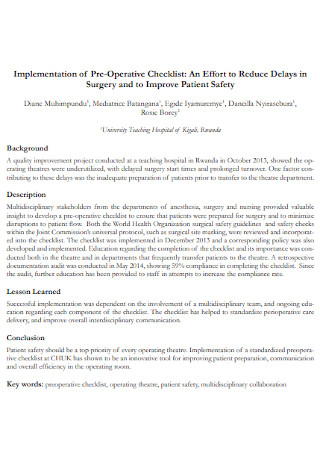
Implementation of Pre-Operative Checklist
download now -
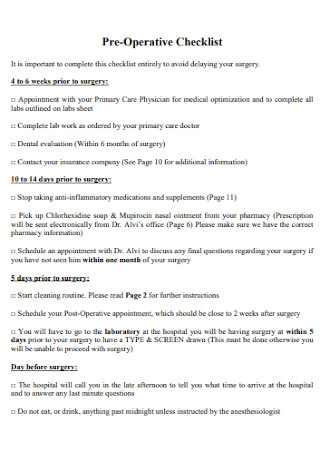
Orthopedic Pre-Operative Checklist
download now -
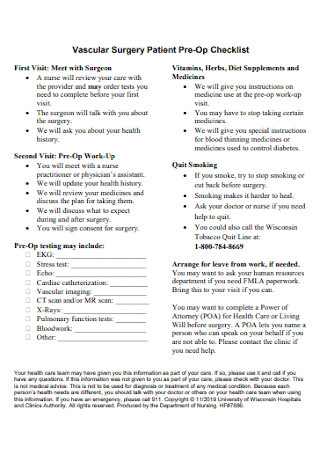
Surgery Patient Pre-Op Checklist
download now -
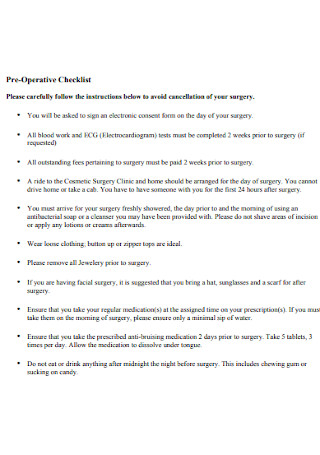
Pre-Operative Surgery Checklist
download now -
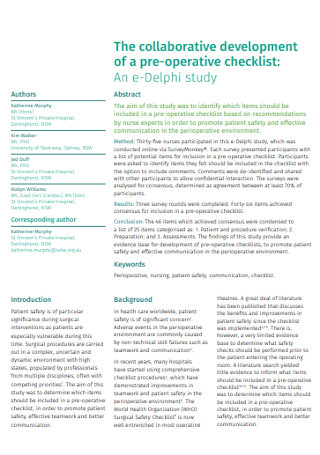
Collaborative Development of Pre-operative Checklist
download now -
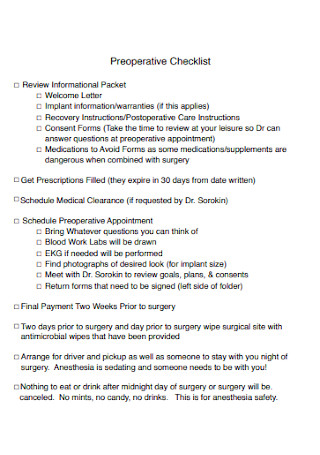
Formal Preoperative Checklist
download now -
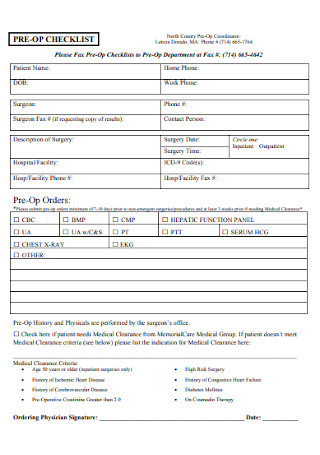
Medical Pre-Operative Checklist
download now -
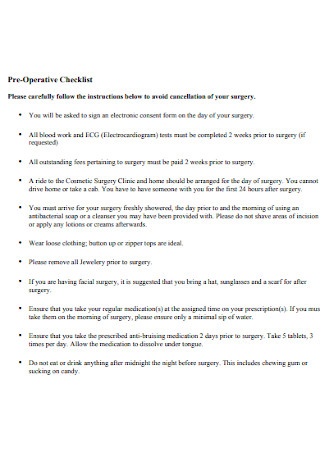
Surgery Clinic Pre-Operative Checklist
download now -
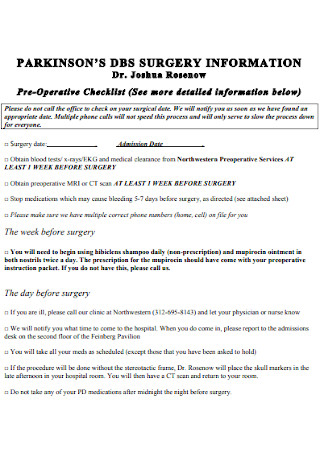
Standard Pre-Operative Checklist Template
download now -
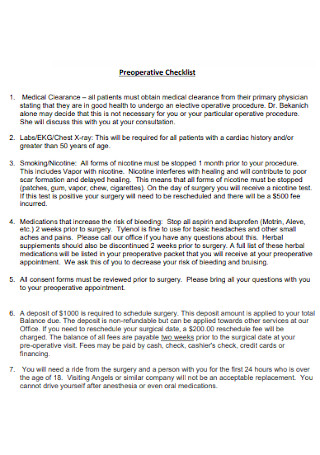
Printable Preoperative Checklist
download now -
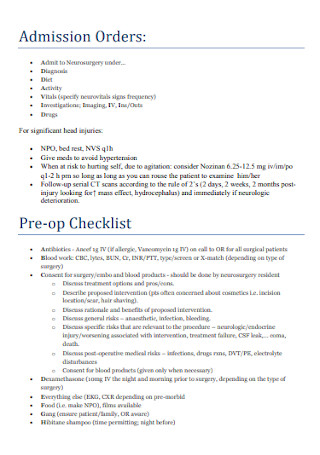
Pre-operative Admission Checklist Example
download now -
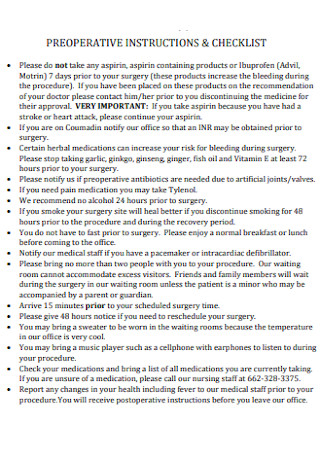
Pre-Operative Instruction and Checklist
download now
FREE Perioperative Checklist s to Download
27+ Sample Perioperative Checklist Templates
What is a Perioperative Checklist?
Major Goals of Perioperative Assessment
Stages of Perioperative Process
How to Create a Perioperative Checklist
FAQs
What are the different phases of the perioperative process?
Why is a perioperative checklist essential?
What are the key roles of a perioperative nurse?
What are some things you need to always explain to a patient before surgery?
What is a perioperative assessment?
What is a Perioperative Checklist?
A perioperative checklist is a type of medical checklist containing all fundamental pre-operative procedures which are confirmed by the nurse, the physician directly caring for the patient, and the patient. It is an essential integrated pre-procedural checklist used to optimize the patients for surgery and maintain adequate pre-surgical preparation by identifying several patient safety issues, preventing surgical delays, and facilitating interdisciplinary collaboration with the medical interdisciplinary team.
There are some well-known examples of preoperative checklists that demonstrate effectiveness in minimizing errors and preventing risks in surgery and critical care. A published report about Atul Gawande’s “Checklist Manifesto” presented a 19-item surgical safety checklist that reduced complications in high-income countries from 9.3% to 6.6%. The Veterans Health Administration demonstrated another example with an 18% reduction in the annual mortality rate for medical facilities that participated in their perioperative checklist program. Also, a clinical study published in the Netherlands displayed an absolute 10.6% risk reduction rate in post-operative complications.
Major Goals of Perioperative Assessment
Conducting a perioperative assessment while using a clinical evaluation report and other health assessment forms is beneficial to evaluate the preoperative medical condition of the patient, the invasiveness of the surgical procedure that will be carried out, and the type of anesthetic to be administered. It determines the possible risk factors or the functional capacity of the patient based on his or her medical history and physical examination. Here are the major goals to consider in your checklist while performing a perioperative assessment.
Stages of Perioperative Process
Being linked with a complex stress response that is equivalent to the magnitude of the injury, the surgical procedures, anesthesia administration, as well as the total operating time, amount of intraoperative blood loss, degree of postoperative pain, and other side effects can lead to more problems in the perioperative period. That’s why the perioperative process must be implemented well to reduce the stress response to surgery and trauma, improve outcomes, lower the length of hospital stay, and other aspects.
How to Create a Perioperative Checklist
Implementing the use of a perioperative checklist in medicine and surgery is crucial to help in lowering the risk of adverse events and improving patient safety. Follow the basic steps in this section so that you can easily and quickly create a simple perioperative checklist.
Step 1: Include the Patient’s Information
Write the first name and last name of the patient, the name of the surgeon, and the date of surgery. Indicate in the checklist when the patient is correctly identified, the procedure to be performed, when the surgical consent form is completed, when the copy of the living will or advance directives on the chart is completed, and when the preoperative instruction are provided to the patient or the legal representative of the patient.
Step 2: Add the Medical Documentation
Kindly check your checklist when the following documents are completed: the patient’s medical history and physical examination attached, physician’s orders attached, pathology or laboratory studies, radiologic studies with site identification if applicable, EKG, and other tests.
Step 3: Indicate the Surgical Information
Check or circle these options in the surgical information section when accomplished: the time of surgery verified, surgical procedure verified, surgical site verified, surgical position verified, required positioning device, implants, and other verified surgical instrumentation. Add your comments in the last part of this section.
Step 4: Use a Sample Perioperative Checklist
If you need to obtain a ready-made perioperative checklist, there are many types and examples of perioperative checklist templates that you can freely select, download, and use for your perioperative process. Sample.net provides an eclectic and unique collection of checklists and document templates for your medical and surgical management work. Choose your preferred sample perioperative checklist template, edit the contents, and save the document.
FAQs
The different phases of the perioperative process are preoperative, operative, and postoperative.
A perioperative checklist is essential because it guides pre-op or perioperative nurses to enhance the safety of the patient during the surgical operation especially in preventing complications and risks. It assists new inpatient and perianesthesia nurses to determine certain items and other factors that can influence patient outcomes negatively if not pre-operatively addressed.
A perioperative nurse has key roles as a circulating nurse, an instrument or scrub nurse, a preoperative or patient reception nurse, a Post Anesthetic Care Unit or recovery nurse, a registered nurse first assistant, and a patient educator.
Here are some questions to answer and explain to a patient before surgery: Why do they need the operation? How will the operation be carried out? Are there other treatment options and is this operation the best option for them? What are the benefits, possible complications, and risks of the operation? Will their medical history and the medication they are currently taking mean the risks, benefits, and possible complications will be different for them? What are their anesthesia options? What can they expect prior to the surgical operation? What can they expect for their recovery in terms of diet, medication, treatment, and home care? Tell them about your professional experience with the operation. Is the surgical facility accredited and properly staffed? How much will the operation cost the patient and what type of medical insurance do you take?
A perioperative assessment is an in-depth evaluation or review of a patient in order to determine the stability of the patient for surgery and how to optimize current medical conditions for the given surgery to be performed.
What are the different phases of the perioperative process?
Why is a perioperative checklist essential?
What are the key roles of a perioperative nurse?
What are some things you need to always explain to a patient before surgery?
What is a perioperative assessment?
As a preoperative nurse or a member of the surgical team, it is important to be skilled in creating and completing a perioperative checklist. This clinical document helps multidisciplinary teams in hospitals and medical facilities in enhancing patient care and improving surgical safety outcomes. Easily download and use our sample perioperative checklist templates for perioperative process and medical management such as a medical timeline, a medical incident report, and a medical case summary.
